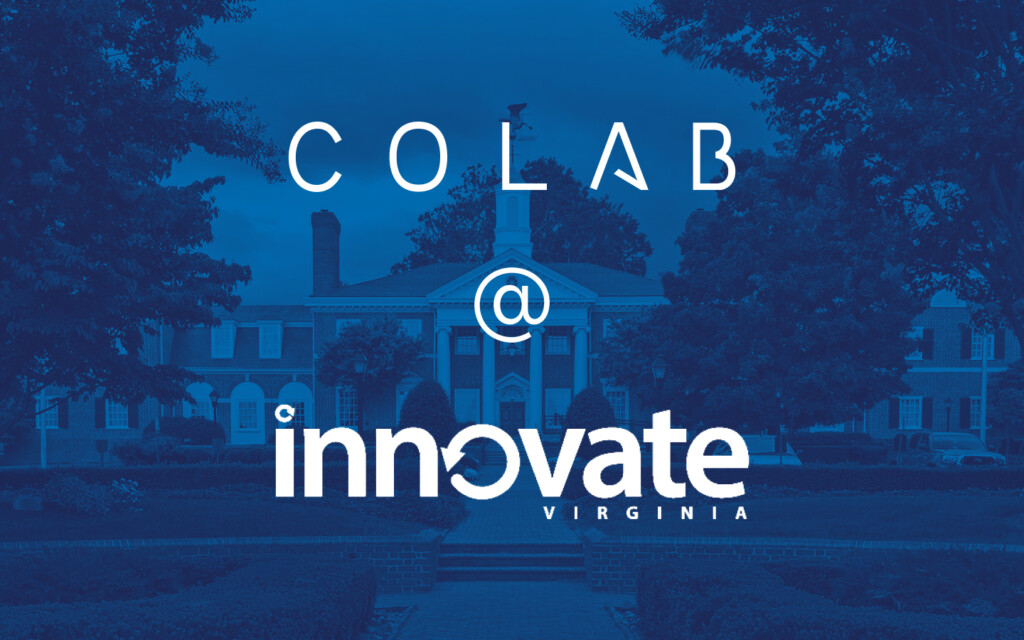Insights from Agile Richmond’s Innovate 2025 Event

Recently our team had the opportunity to attend Agile Richmond’s Innovate Virginia 2025 event.
The conference brought together attendees both familiar with agile and hoping to implement some form of agile. Since we have undergone an agile transformation, we hoped to gain tactics to build stronger teams, innovate, and gain efficiency. This recap will walk you through our highlights, key takeaways, and lessons learned.
Overview of the Event
We’ve had the opportunity to attend this event previously and each time we’ve attended we were able to get something new out of it. In fact, this was one of the sources of inspiration as we began our agile journey. There were many ideas in our early attendance of this conference that helped guide us to where we are today.
We were very excited to be able to give back as speakers with Morgan and I addressing how the Four Day Work Week has affected our agile implementation. Beyond our contribution, this year’s conference was focused on applying Agile principles while addressing real-world challenges. Sessions covered a range of topics, from creating resilient learning teams to embedding innovation within Agile workflows. Attendees were encouraged to rethink their approach to team management, innovation, and delivery, leaving with actionable tools and insights to improve outcomes.
Now, let’s dig into the key learnings that may be useful as you refine how you and your teams approach day-to-day challenges.
Building Resilient Learning Teams
The event opened with a thought-provoking keynote by Tricia Broderick (author of Lead Without Blame), who emphasized the importance of resilient teams built on collaboration and trust. Broderick challenged attendees to develop “learning teams” capable of addressing challenges by consistently reflecting on what was learned and improving through iteration.
She shared critical insights, including that cooperation is not collaboration—an essential mindset shift for teams aiming for higher productivity and innovation. Collaboration involves taking collective ownership of outcomes, while cooperation is often limited to individuals completing isolated tasks.
Cooperation is not collaboration.
Broderick also discussed the value of acknowledging unexpected lessons. For teams, this means celebrating even the “small wins” or offbeat insights that arise in day-to-day interactions, reinforcing a culture of continuous learning.
Key Takeaway
Implementing guided reflections, where teams explore lessons learned from completed projects or sprints, can be instrumental in addressing knowledge gaps and uncovering new opportunities.
Rethinking Innovation in Agile Workflows
Innovation in Agile was explored during the “Getting Innovation into Your Agile” session, which offered practical approaches to embedding innovation systematically. While “big picture” initiatives are important, this session emphasized leveraging “micro-innovations” as part of day-to-day work.
Practical Steps for Leaders
- Set Clear Client Goals: Ensure clients understand the targeted outcomes of each project upfront.
- Integrate Innovation in Iterations: At the start of each iteration, actively invite your team to propose small enhancements designed to make an impact quickly. These suggestions could range from usability fixes to functional improvements.
- Empower Team Autonomy: Teams that are given the space to innovate are more engaged and deliver higher-value work.
These practices help foster strategic thinking while keeping projects aligned with client needs.
Addressing DevOps Challenges
One recurring theme across sessions was the balancing act required to optimize DevOps processes. Many challenges, including maintaining current tooling, innovative system upgrades, and reducing technical debt, resonated across multiple attendees, particularly those from smaller organizations.
While automating workflows and implementing robust DevOps strategies is promising, questions remain about its affordability and efficiency for smaller teams.
Key Considerations
- Evaluate the return on investment (ROI) of DevOps strategies before making significant changes.
- Incremental improvements—such as automating repetitive tasks or updating documentation processes—may deliver quick wins without significant overhead.
The Value of Prioritization
Erin Hill’s session on prioritization frameworks offered practical methods for organizing work according to its impact and feasibility. She shared four tools for prioritization that team leaders can use to focus efforts on high-value initiatives:
- MoSCoW: Categorizing deliverables into “Must Have,” “Should Have,” “Could Have,” and “Won’t Have.”
- WSJF (Weighted Shortest Job First): A scoring model that identifies the most valuable items to work on first.
- RICE (Reach, Impact, Confidence, Effort): A data-driven framework that factors effort into prioritization to ensure team efficiency.
- Eisenhower Matrix: A time management tool that helps prioritize tasks by urgency and importance, dividing them into four quadrants: do now, schedule, delegate, and eliminate.
These frameworks help teams prioritize effectively, bringing clarity to decision-making even when faced with diverse project goals.
A Shift in Perspective
For many attendees, including project managers, Agile principles are second nature. However, a standout theme of the Innovate 2025 conference was the importance of audience mindset when designing workflows and processes. One session, in particular, prompted a shift in how managers define their audience—not just external customers, but also internal teams.
This perspective encouraged many to refocus on delivering value to production teams, actively involving them in shaping processes that work best for their environment.
Real-World Application
By shifting focus to empower production teams, leaders can encourage a greater sense of ownership, improve morale, and enable innovative solutions directly at the team level.
A Thoughtful Balance Between Leadership and Team Priorities
One of the most candid discussions revolved around the balance leaders must strike between meeting organizational expectations and staying connected to their teams. Many attendees found it challenging to give equal attention to team needs and leadership responsibilities. However, the consensus was clear—fostering team growth and autonomy should take precedence.
This balance is nuanced and may require proactive discussions with leadership to adjust priorities where necessary.
Dedicate the majority of your time to empowering and mentoring your team.
Tips for Achieving this Balance
- Dedicate the majority of your time (70%, for example) to empowering and mentoring your team.
- Collaborate with senior leadership to ensure initiatives align with team goals without overburdening them.
Last But Not Least
Morgan and I presented a session titled “Unlocking Agile Success Through a 4-Day Work Week.” We shared our journey at COLAB in implementing a four-day workweek and its transformative impact on our team’s productivity and overall workplace satisfaction. This initiative was part of the “Measuring Outcomes” track.
Our presentation detailed how we aligned Agile methodologies with a condensed workweek, enhancing team efficiency without compromising quality. We discussed strategies for synchronizing Agile sprints within four days, ensuring client satisfaction and maintaining sprint velocity. Additionally, we highlighted improvements in team engagement, mental well-being, and workplace culture resulting from this change. We also addressed challenges encountered during the transition and emphasized the importance of continuous adaptation based on real-time feedback. Furthermore, we shared methods for securing stakeholder support through co-creation and thoughtful planning.
The Outcomes
- Enhanced Productivity: Implementing a four-day workweek led to a 43% increase in creative thinking and innovation.
- Employee Retention: We experienced 0% voluntary attrition over two years.
- Attracting Talent: 89% of new hires indicated that the four-day workweek was a key factor in their decision to join COLAB.
- Agile Alignment: Effective synchronization of Agile practices within a shorter workweek is achievable with intentional strategies.
- Cultural Benefits: A reduced workweek can improve team collaboration, morale, and workplace satisfaction.
For more details on our approach, results, and valuable resources, visit our official page on the session:
Final Thoughts
Innovate 2025 was a reflection on not only how organizations can evolve through Agile methodology but also the tangible outcomes that matter in team management, innovation, and delivery. For project managers and team leaders, events like this help clarify what’s working, highlight areas for improvement, and provide actionable solutions tailored to organizational needs.
Looking ahead, the emphasis on collaboration, prioritization, and innovation at the micro-level offers a template for organizations striving to deliver value swiftly and sustainably.
If you’d like to explore ways to evolve your team’s approach further or have questions about any of the techniques discussed, reach out to arrange a consultation with our team.
